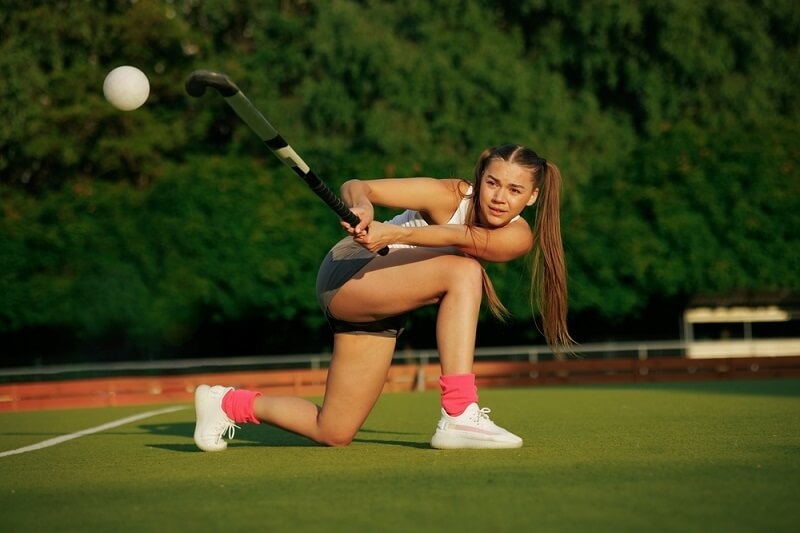
Close
Ever watch a player who just knows where the puck’s going before it even moves? That’s hockey sense, the invisible edge that separates the greats from the good. It’s not about speed, strength, or fancy stickwork. It’s about instinct, anticipation, and making the smartest play under pressure.
And here’s the secret: hockey sense isn’t something you’re born with. It’s something you can train. With the right habits, anyone can improve on-ice decision making, develop hockey awareness, and build that “feel” for the game that coaches can’t stop talking about.
Let’s talk about six ways to do exactly that.
Most players focus on shooting, passing, or skating drills. But hockey sense lives in your eyes. It’s how quickly you read the ice, how you track where players are, where they’re going, and what’s about to unfold.
Next time you’re watching an NHL game, don’t just follow the puck. Watch the players away from it. Notice how they shift, angle their bodies, or glance before passing. That’s hockey situational awareness in motion.
Wayne Gretzky famously said he played “where the puck is going to be.” That’s not magic—it’s pattern recognition. You can build the same skill by slowing down footage of your own games, or even by running mental reps: picture how a play develops if the puck goes left instead of right.
Over time, your eyes start catching cues automatically. You’ll move before the play happens. And that’s how to improve hockey sense—by learning to see, not just to skate.
Top Pick: Top 10 Traits Every Hockey Player Must Master for Success
Raw skill is flashy, but awareness wins games. Developing hockey awareness means understanding why things happen on the ice, not just what happens.
That’s where hockey IQ training comes in. It’s about studying space, timing, and rhythm. Think of it like chess on skates—you’re predicting, reacting, and adjusting in real time.
Here’s a trick: after every shift, mentally replay it. What went right? What could you have read faster? If you were late to a rebound or missed a passing lane, don’t blame bad luck—study the setup. That reflection is your classroom.
Some players use visualization too. Before games, they picture themselves reading a breakout, anticipating a turnover, or cutting off a pass. It’s simple, but it wires your brain for better hockey situational awareness.
And the more you “think the game,” the more instinctive it becomes.
If you want to improve on-ice decision-making, play small. Literally. Small-area games—3v3s, 2v2s, corner battles, force you to make fast reads and quicker choices. You don’t have time to overthink.
In tight spaces, every second counts. You learn how to shield the puck, create passing lanes, and spot open teammates while under pressure. It’s the most natural way to develop hockey awareness without realizing you’re doing it.
Many coaches say these drills simulate real gameplay better than any full-ice scrimmage. You’re reacting to chaos, adjusting to bounces, and building confidence under stress—all critical elements of hockey IQ training.
And honestly, they’re fun. You’ll feel yourself learning in real time.

Here’s a truth every player has to face: mistakes are gold. The fastest way to build hockey sense is by failing, then fixing it quickly.
After a game, don’t just replay your highlights. Watch your turnovers, missed reads, or defensive lapses. Ask yourself, what did I see, and what should I have seen? That small habit builds pattern awareness faster than any drill.
It also strengthens your emotional control. Players who panic lose their awareness; they react, instead of responding. The ones with strong hockey situational awareness? They stay calm, adjust, and make the smart play next time.
So yeah, learning from mistakes isn’t glamorous, but it’s how to improve hockey sense that sticks for good.
You can’t have great hockey sense in isolation. The best players communicate constantly—verbally and with body language.
A quick shout, a tap on the stick, or a subtle nod can change the play entirely. That kind of awareness turns individuals into a synchronized unit.
During hockey IQ training sessions, focus on communication drills too. Talk through breakouts, call switches, and give quick cues mid-play. It keeps your brain alert and strengthens your team’s shared awareness.
It’s simple math: more communication equals more on-ice information. And that equals smarter, faster decisions.
So even if you’re not the loudest on the bench, find your voice. Hockey sense thrives when everyone’s tuned in.
Ironically, the more you train your brain, the less you should use it during the game. Sounds odd, right?
Once the puck drops, overthinking kills instinct. The great players trust their preparation. They’ve trained their hockey sense so well that it becomes second nature.
This is where confidence comes in. If you hesitate, you lose that half-second edge. But if you trust your reads, your body responds before your brain finishes the sentence. That’s true flow.
You can even train that mental rhythm off-ice—through meditation, breathing drills, or short visualization sessions. It keeps your reactions smooth and your focus razor-sharp when things get messy.
Because the real magic of hockey sense? It’s thinking fast without feeling like you’re thinking at all.
Must Read: Maximize Your Hockey Practice Now: 5 Essential Tips
Hockey sense isn’t some mysterious gift; it’s a skill you sharpen every time you hit the ice. When you train your eyes, build hockey situational awareness, and commit to steady hockey IQ training, you’re setting yourself apart from the crowd.
Sure, improving on-ice decision-making takes time, but so does mastering a perfect slap shot. The difference is that this skill lasts your whole career.
So the next time you lace up, remember: see the ice, feel the flow, and play smart. That’s how to improve hockey sense: one read, one shift, one smart play at a time.